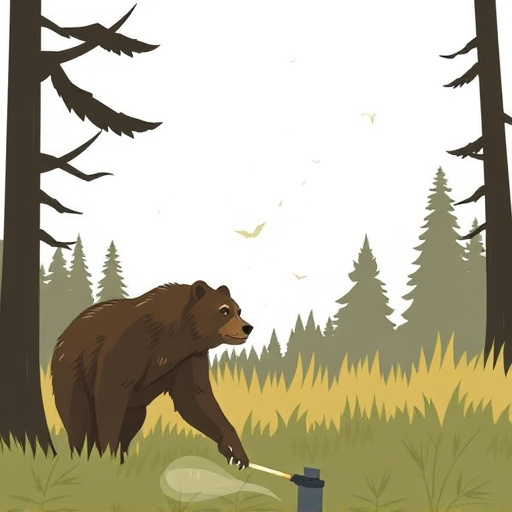The ideal best bear spray distance is 20-30 feet (6-9 meters), aiming at the bear's face and considering wind, weather, and terrain. Select gear with wide-reaching nozzles covering head-to-toe, follow manufacturer guidelines for application and safety to ensure effectiveness during hikes in bear country.
Alaska’s rugged landscapes attract adventurers, but bear encounters can be dangerous. To ensure safety during hikes, understanding bear repellent gear is crucial. This article explores the effectiveness of bear spray and factors like optimal distance for application (best bear spray distance) for maximum protection. We’ll guide you through choosing gear designed to create a reliable bear repellent pattern, ensuring your peace of mind while navigating Alaska’s wilderness.
- Understanding Bear Spray Effectiveness and Safety
- Factors Influencing Best Bear Spray Distance
- Choosing Gear for Optimal Bear Repellent Pattern
Understanding Bear Spray Effectiveness and Safety
Bear spray, also known as bear repellent, is a popular choice among hikers and outdoor enthusiasts navigating regions with bear populations. When used correctly, it can be highly effective in deterring bears from approaching. Understanding the effectiveness and safety of bear spray involves grasping two key aspects: its range and pattern of protection.
The best bear spray distance pattern typically ranges from 20 to 30 feet (6 to 9 meters), though this can vary based on factors like wind, weather conditions, and the specific spray’s formulation. Within this range, a well-aimed spray cloud can create an effective barrier, causing bears to flee. It’s crucial to follow manufacturer instructions regarding application techniques and safety precautions, as improper use may not only be ineffective but also potentially dangerous for the user.
Factors Influencing Best Bear Spray Distance
When considering the best bear spray distance, several factors come into play. The effectiveness of bear spray largely depends on proximity to the bear and the specific spray pattern. Aiming directly at the bear’s face and eyes is crucial for maximum impact, as it disrupts their senses and triggers a flight response. Wind direction plays a significant role in determining the best range; spraying against the wind allows for better visibility and control over the direction of the spray, ensuring it reaches the bear effectively. Additionally, terrain features like trees or rocky outcrops can affect the spray’s travel distance, creating areas of protection or potentially limiting access to safe distances.
Choosing Gear for Optimal Bear Repellent Pattern
When selecting bear repellent hiking gear, understanding the best bear spray distance and pattern is key. The optimal range for effective bear spray varies depending on factors like bear species and terrain. Generally, a good rule of thumb is to aim for a spray pattern that covers you from head-to-toe and reaches approximately 20 to 30 feet (6 to 9 meters) in ideal conditions. This distance ensures that if a bear approaches, the spray will create a barrier, deterring it from getting closer.
Choosing gear with a wide-reaching, uniform spray pattern is essential. Look for canisters designed with nozzles that disperse spray evenly in all directions. Some models have adjustable settings to control the intensity and range of the spray, allowing you to adapt to different environments and bear encounters. Always follow manufacturer instructions on usage, including proper aiming techniques, to maximize effectiveness during your hike in bear country.
When hiking in bear country, selecting the right gear, including effective bear spray, is vital for your safety. By understanding the factors that influence the best bear spray distance and choosing equipment that ensures a optimal repellent pattern, you can significantly reduce risks during outdoor adventures. Remember, knowledge and preparation are key to navigating these wild encounters with confidence.
